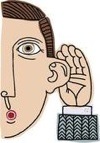Parks Associates (www.parksassociates.com) has released new research showing connected health device ownership (including digital fitness trackers, networked weight scales, connected treadmills, and blood pressure meters) has risen from 24% to 33% of U.S. broadband households between 2013 and 2015 The research group also notes that 13% of U.S. broadband households own two or more connected health devices.
Adoption of wearables and connected health devices is growing, evidenced by the stellar growth achieved by Fitbit in 2015, according to Harry Wang, director, Health and Mobile Product Research, Parks Associates. The health and wellness industry is also speeding up its pace of innovation. For example, at the 2016 HIMSS Annual Conference & Exhibition this week, AT&T announced partnerships with health and wearable players including Becton Dickinson, WellNest, and OneMedia.
“While opportunity exists across all demographics, the growing demand from the Baby Boomer generation is encouraging,” Wang said. “These consumers face a variety of health and mobility challenges, so there is tremendous potential for accelerated adoption, improved outcomes, and ultimately significant cost savings for both companies and consumers. Interoperability and standards compliance will be the primary challenges as companies look to expand the connected health market and engage this demographic.”
The research firm reports 37% of consumers aged 18-24 own a connected health device, while 42% of consumers aged 24-34 own one. Among consumers 65 and older, 31% own a connected health device.
“Personal experience, attitudes towards preventive care, emotional attachment to care services, and perceived usefulness of support tools all help define what clicks with consumers,” Wang said. “Providers need to keep this in mind as they focus on increased engagement.”
Digital pedometers and fitness trackers experienced the most growth between 2013 and 2015. Use of digital pedometers and fitness trackers in U.S. broadband households doubled from 5% to 10% between 2013 and 2015. Connected exercise equipment remains the most popular health device at nearly 14%.


